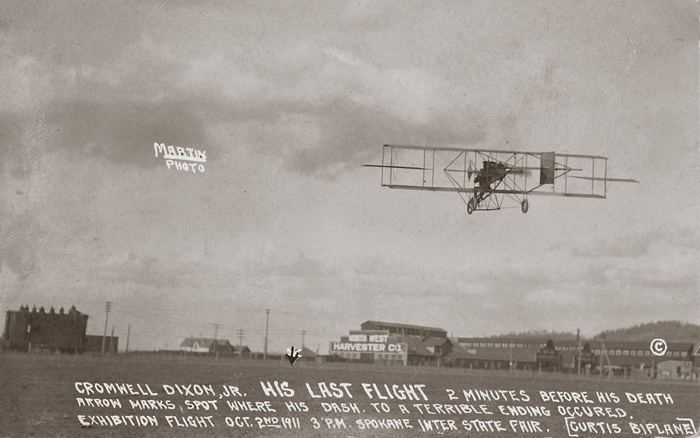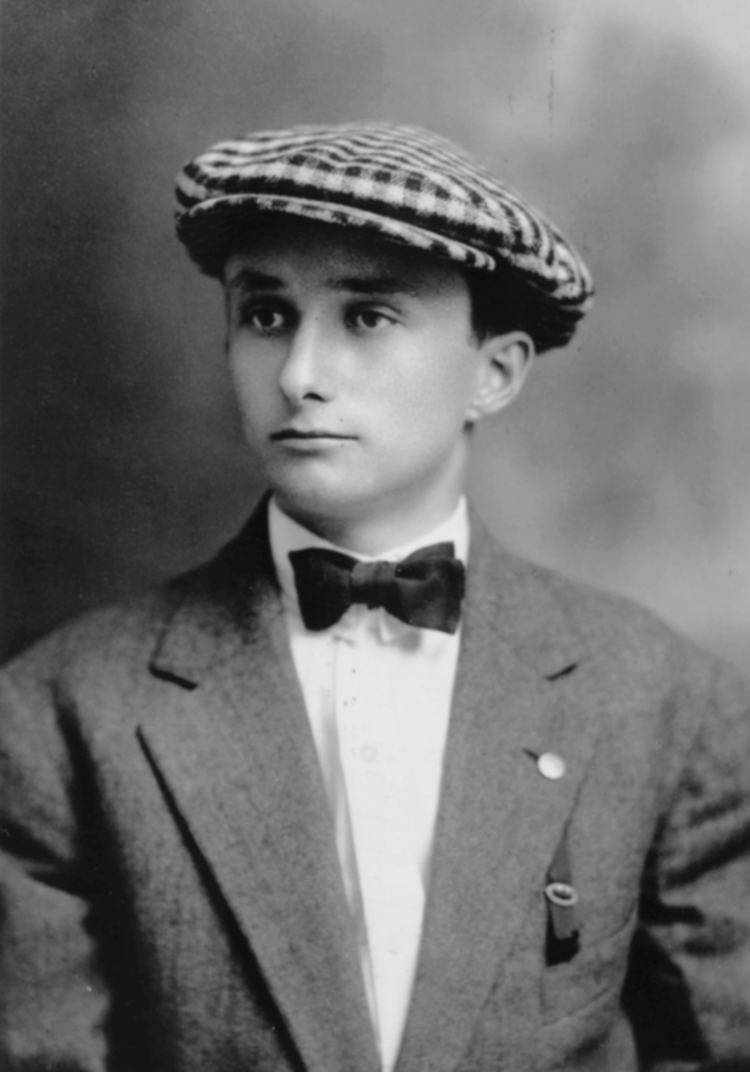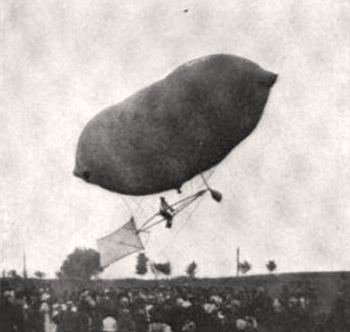Nationality American Occupation Aviator | Name Cromwell Dixon | |
 | ||
Resting place | ||
Cromwell dixon s sky cycle ws
Cromwell Dixon (July 9, 1892 – October 2, 1911) was a teen dirigible pilot and the first person to fly in an airplane across the Continental Divide.
Contents
Cromwell dixon flight
Life

Cromwell Dixon was born in San Francisco; later his family moved to Columbus, Ohio. As a boy, Dixon showed his inventing skills by building a rollercoaster for the neighborhood kids; in 1903 he built his own motorcycle. When he was 14, he was dubbed "the youngest aeronaut in the world" when he won first prize for dirigibles in the 1907 International Balloon Race in St. Louis, Missouri with his home-made, human-powered dirigible he called the "Sky-cycle." He flew eight miles and crossed the Mississippi River on the way. After this success, he issued stocks to finance a mechanical version of his dirigible. On his seventeenth birthday, he flew in a self-made dirigible balloon over Dayton, Ohio. He continued to show his airships across the United States and Canada well into 1910. On September 4, 1910, he nearly crashed into the sea with his motor-powered dirigible when the engine failed at a height of 500 feet (150 m) during a flight at the Harvard aviation meet in Boston, Massachusetts. He eventually landed only 10 feet (3.0 m) from the water's edge.

By 1911, Dixon had switched to heavier-than-air craft, flying a Curtiss, and he received his air pilot license (#43) on August 6, 1911. In September 1911, he performed in his Curtiss "Pusher" plane at the Helena, Montana fair. On September 30, he flew from Helena to Blossburg, some 15 miles to the west, over the Mullan Pass. The flight took 26 minutes, and by completing it Dixon became the first aviator to cross the Continental Divide. The same day, he flew back to Helena. The return flight proved to be more difficult; Dixon had problems reaching the necessary altitude, and the flight took 43 minutes. His achievement earned him $10,000, presented to him by Governor Edwin L. Norris.
Death

He died two days later, in Spokane, Washington at the Interstate Fair. Billed as the youngest licensed aviator in the United States, he made his first flight of the day at 3pm, after having had some engine trouble. Flying his biplane in front of 12,000 spectators, the plane fell from 100 feet (30 m) into the Northern Pacific railroad cut north of the fairgrounds because of a strong downwind. He died less than an hour later in the hospital.
His grave is a small, rectangular limestone brick bearing a plaque that reads, "Cromwell Dixon, World's Youngest Aviator, Loved By All." It sits in the Greenlawn Cemetery, in his hometown of Columbus, Ohio.
Legacy
A monument commemorating his historic Continental Divide flight was erected in 1912, but it was moved a few times over the years. It was finally placed in Morrison Park, southwest of the Helena Regional Airport, on October 6, 2009. The week before, September 30 was declared "Cromwell Dixon Day" by the Lewis and Clark County Commissioners.
Cromwell Dixon Drive in Helena is named after him.
